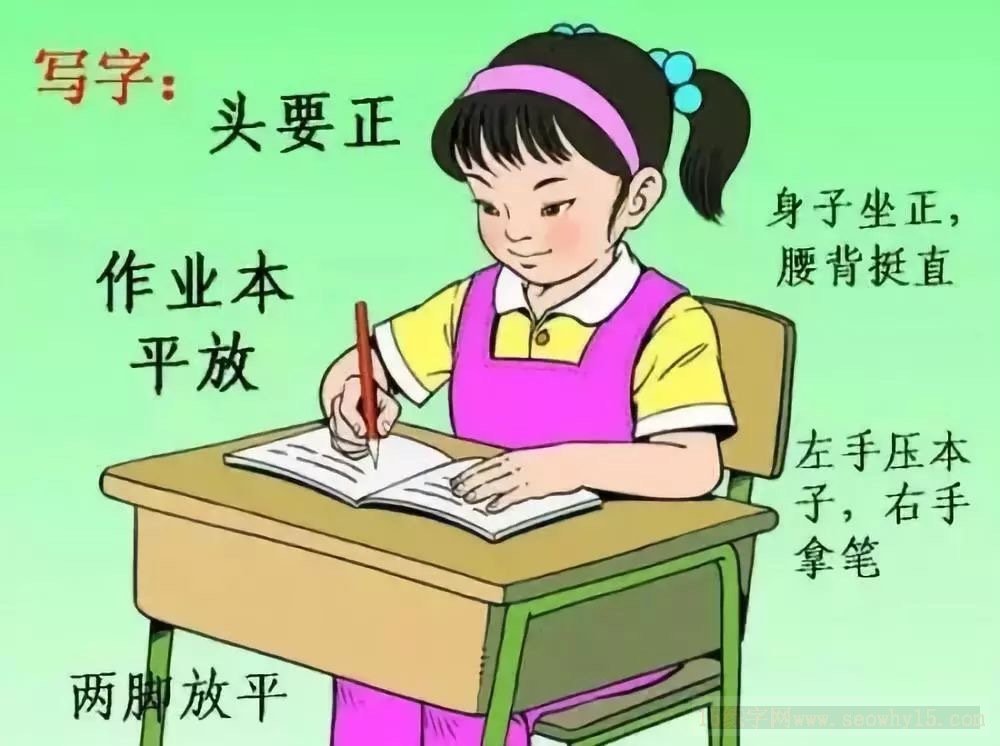The education department said calligraphy will be included in the exam. The importance of writing and writing is increasingly recognized. As the saying goes, a word is like its face, and a word is like its person. Beautiful calligraphy can reflect a person's cultivation and character, and even affect your life. If you write well, you can get 5-7 more points in Chinese. So how can children practice calligraphy to become good calligraphers?
Let’s first understand how important it is for children to practice calligraphy well?
1. Writing has been included in the examination
The 2019 Beijing High School Entrance Examination "Examination Instructions" was released. It was learned from the Beijing Education Examination Agency that this year's Beijing High School Entrance Examination "Examination Instructions" has been partially fine-tuned to highlight the examination of China's excellent traditional culture and the rule of law. Calligraphy has been included in the examination of Chinese subjects. , increase the knowledge of the five fonts of seal script, Li script, Cao script, Kai script and Xing script.

"understand its general evolution process" and strengthen the examination of calligraphy knowledge and calligraphy appreciation. This important change in the high school entrance examination will cause many changes in calligraphy education. As the country attaches great importance to excellent traditional culture, many measures to promote traditional culture education It is being gradually implemented. One of the effective measures is to increase the examination of calligraphy knowledge in the high school and college entrance examinations.
2. Extra points for calligraphy skills
The "Indicator System for the Assessment of Artistic Quality of Primary and Secondary School Students (Trial)" stipulates that in the assessment of students' artistic quality, "students with specialties in calligraphy will receive an additional 10 points." Well-written handwriting can turn out to be a "powerful tool to gain points".

3. Electronic grading requires higher writing requirements
As all teachers and parents know, more and more exams are beginning to use "electronic grading", especially large-scale exams such as the high school entrance examination and the college entrance examination.
Electronic grading also places more demands on children's writing standards and answering habits.
So what is the reason why children cannot write well?
Some parents say that their children have not seen any results after practicing calligraphy for a long time. What is the reason?
In general, there are these factors:
1. Influence on personality
The development of writing habits is closely related to the child's own personality.
Some studies have shown that children with a lively and cheerful personality will relax when writing and pay less attention to the strokes of Chinese characters; while children with a well-behaved personality will have graceful handwriting and will write more standardizedly.
Some children have never attended any writing classes, but they still write well. This is the reason.
2. Attitudinal influence
With the increase in schoolwork and the increasing content of homework, it takes a lot of time to complete, which makes many children just want to complete the homework as quickly as possible when writing homework, without seeking quality, and their handwriting slowly begins to become scrawl.
3. Wrong pen holding gestures
Wrong hand gestures may cause children to have problems with their sitting posture, distorted hands, deformed bones, get tired easily, be slow in doing homework, and have unsightly handwriting. The chain reaction is that children are disgusted with writing.
4.Irregular stroke order
Many children have reverse stroke order when writing. The direct result of irregular strokes will lead to crooked writing, which naturally looks unsightly.
Whether a child has just learned to write or is already in third or fifth grade, he or she will often make mistakes in the order of strokes when writing. Do you sometimes need to think for a while when writing a word? Sometimes, even the stroke order of the written words may not be correct.
The rules of stroke writing of Chinese characters must be kept in mind:
①The starting stroke of horizontal and vertical strokes is heavier, and the stroke of tapping is lighter;
② The strokes should be paused slightly at the turning point, slightly heavier and slightly slower;
③ When lifting the hook, the pen should be slightly paused and slightly heavy at first, and then gradually become brisk, and the pen should be closed and pointed;
④All strokes are written in one stroke and cannot be redrawn;
⑤When the strokes form Chinese characters, some shapes will change slightly, so please pay attention when writing.
So how can children practice calligraphy to become good calligraphers?
1. Recognize the importance of calligraphy learning
First of all, parents should pay attention to and explain the importance of calligraphy learning to their children, create a good calligraphy practice environment for their children, and help their children make a plan to practice calligraphy for half an hour every day, such as from 7 to 7:30 every night.
Fixed time is conducive to the development of children's habits, forming conditioned reflexes, cultivating students' interest in calligraphy practice, and persisting. It is said that if you persist in one thing for 21 days, a habit will be formed, and if you persist for more than 90 days, a stable habit will be formed.
When children feel slack, parents can practice calligraphy with their children and compete to see who can write beautifully.
2. Pay attention to your child’s sitting posture and slow down
Three Ones: "One inch, one foot, one fist", "Head upright, body upright, feet secure":

When many children practice calligraphy or do homework, they only pursue speed and finish quickly before playing, resulting in sloppy fonts.
Some parents ask their children to write more pictures. In this way, they only focus on quantity but not quality, which will not achieve any effect in practicing calligraphy.
Therefore, as a parent, you should check your child's homework in time. If you find that the font is not neat, let your child do it again. You must correct your child's attitude.
3. Carry out more copying and practice
Let your children practice calligraphy using copybooks and learn basic strokes such as horizontal and vertical strokes on the copybook. First, they can write these basic strokes beautifully, and then learn to practice these basic strokes without the copybook.
When practicing calligraphy according to the copybook, you should carefully observe the words on the copybook, learn the glyphs, structures, strokes, etc. on the copybook, analyze and figure out the characteristics of the strokes of the words and the relationship between the strokes.
After you finish writing, be sure to compare it with the copybook to see where your writing is different from the original writing. Don’t immerse yourself in writing, as the “comparison” step cannot be omitted.
4. Learn to “memorize” copybooks
When many children practice calligraphy, they write well in the first few steps, but when they leave the copybook, the fonts return to their original shape. The fundamental reason is that the children do not memorize the glyphs on the copybook!
In the process of practicing calligraphy, memorization can be said to be an extremely important part. If you don't know how to memorize calligraphy, you will not be able to write beautiful copybooks without copybooks.
Memorizing the copybook is actually a step forward on the basis of the copybook. Just like memorizing the text, every word can be written clearly and correctly without looking at the copybook!
5. Appropriate rewards
When children successfully complete tasks every day, give appropriate rewards and praise!
If you have time during weekends and holidays, take your children to museums and exhibition halls to appreciate the charm of calligraphers of past generations and cultivate your children's interest in calligraphy. Then buy a few calligraphy and paintings and hang them in your children's study to influence their calligraphy comprehension from time to time. force.
In addition, when there are calligraphy exhibitions or competitions and other activities, we should encourage children to actively participate. No matter whether the child wins a prize or not, it will be a promotion for the child and allow his handwriting to make a "qualitative" leap.








